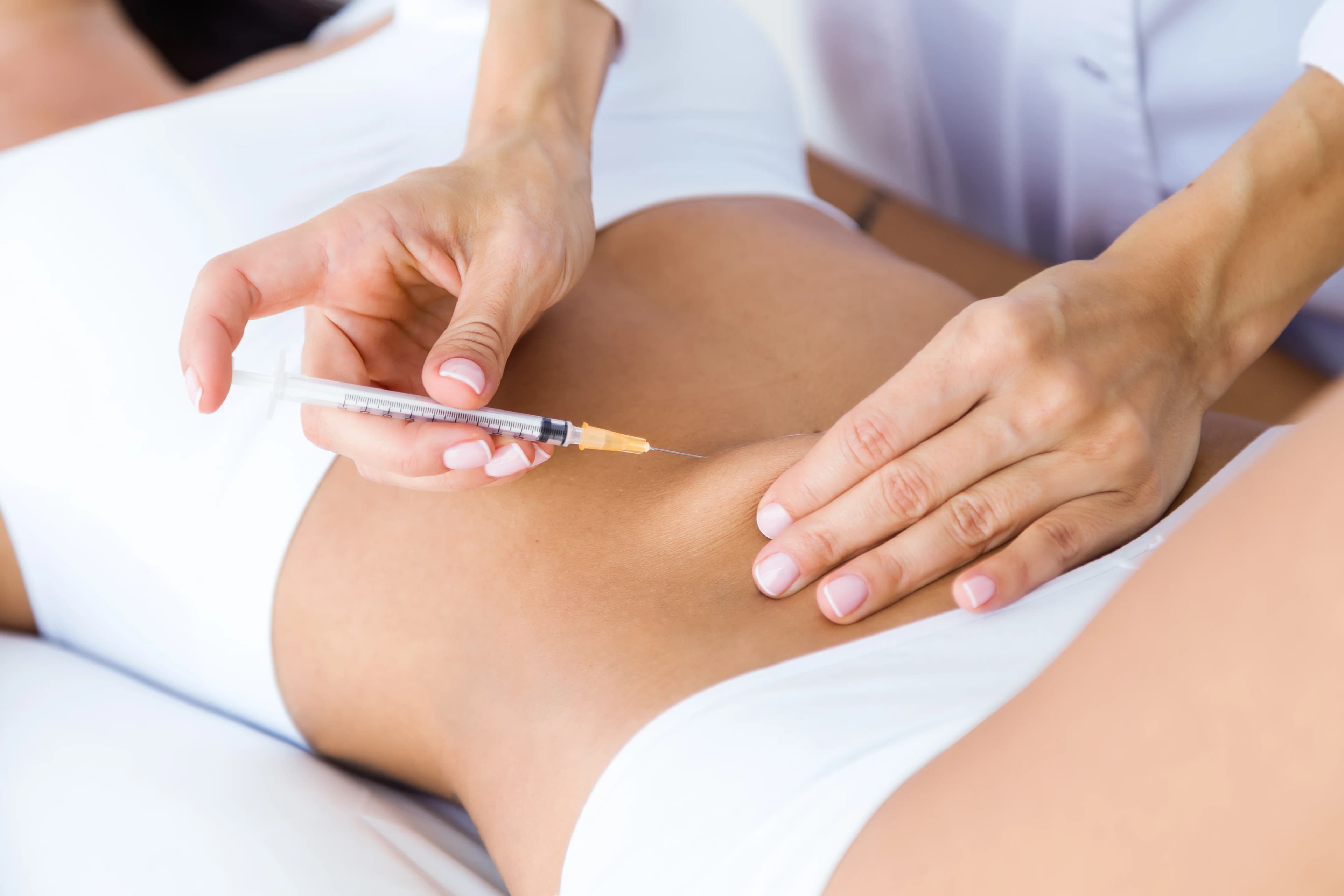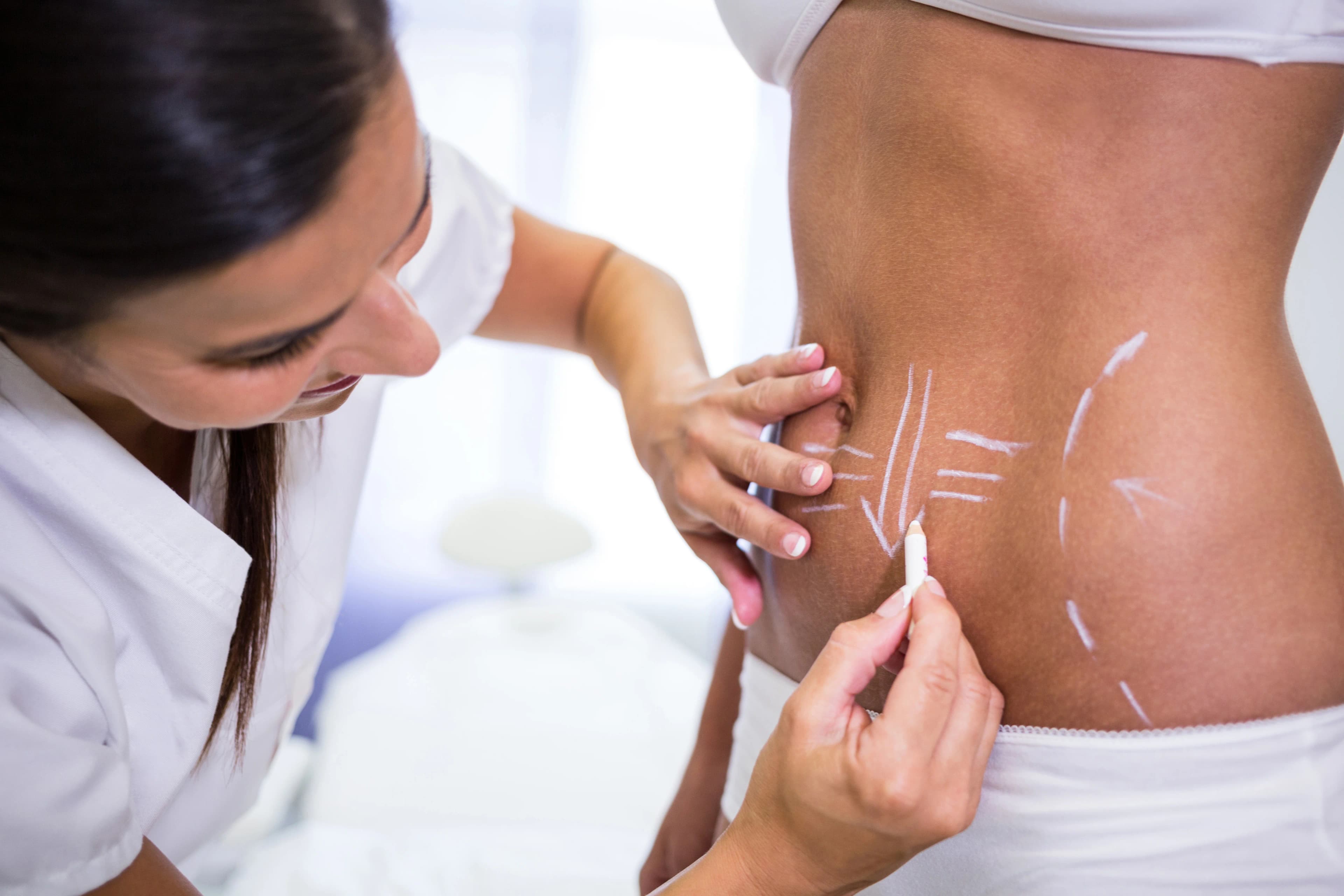Many of our patients are interested in improving the appearance of their abdominal area. Two procedures can help with that: tummy tuck (abdominoplasty) and liposuction. Both procedures can drastically improve clients' stomachs by creating a toned and tight midsection. Still, there are some differences between them that we discussed in this article from the Doctour website.

Liposuction Vs. Tummy Tuck; Which one is right for you?
Liposuction
Liposuction may be a good fit if you’re looking to remove small fat deposits. These are commonly found on the hips, thighs, buttocks, or stomach area. The procedure will remove fat deposits from the targeted area, reducing bulges and improving contour. However, liposuction isn’t recommended as a weight loss tool. You shouldn’t get liposuction if you’re obese.
Tummy tuck
In addition to removing excess fat from the abdomen, a tummy tuck also removes excess skin. Pregnancy or significant shifts in your weight can stretch out the skin that surrounds your stomach. A tummy tuck can be used to restore the look of a flat and contoured midsection. This procedure may involve bringing the rectus abdominus, or sit-up muscles, back together if they’ve been stretched or separated by pregnancy. You may want to reconsider a tummy tuck if:
Your body mass index is over 30
You’re considering getting pregnant in the future.
You’re actively trying to lose weight.
You have a chronic heart condition.
What is the procedure like?
Liposuctions and tummy tucks are both performed by a plastic surgeon and require incisions and anesthesia.
Liposuction procedure
You may be intravenously sedated for this procedure. In some cases, your surgeon will apply a local anesthetic to your midsection. Once the area is numb, your surgeon will make small incisions around the site of your fat deposits. A thin tube (cannula) will be moved underneath your skin to loosen the fat cells. Your surgeon will use a medical vacuum to suction out the dislodged fat deposits. It may take several sessions to achieve your desired result.
Tummy tuck procedure
Your surgeon will put you to sleep via general anesthesia. After you’re sedated, they’ll make an incision at the bottom of the skin that covers your abdominal wall. Once the muscles are exposed, your surgeon will sew the muscles in your abdominal wall together if they have become stretched out. They will then pull tight the skin over your abdomen, trim off excess skin, and close the incision with sutures. A tummy tuck is done in one procedure. The entire surgery typically takes two to three hours.
What are the expected results?
Although liposuction and a tummy tuck both claim permanent results, significant weight gain after either procedure can alter this outcome.
Ideal Candidates for Liposuction
You are in good overall health, within a reasonable range of your ideal body weight.
You are a non-smoker.
You do not have sagging skin around the abdomen.
You have excellent skin elasticity.
Ideal Candidates for tummy tuck
You are in good, overall health, close to your ideal body weight.
You have a “paunch” or excess flab of sagging skin around the abdomen.
You have completed your last pregnancy.
You are open to a surgical procedure that will involve significant recovery time.
In general, patients under the age of 40 are better suited forliposuction because they tend to have better skin elasticity. Patients over the age of 45 may benefit from a tummy tuck’s ability to tighten weakened or separated abdominal muscles. Weakened abdominal muscles can occur due to age or as a result of multiple pregnancies.

What are the possible complications?
Although there are side effects associated with any surgery, each procedure poses different risks that you should be aware of.
Liposuction complications
With liposuction, your risk of complication increases if your surgeon is working on a large area. Performing multiple procedures during the same operation can also increase your risk. Possible risks include:
Numbness: You may feel numbness in the affected area. Although this is often temporary, it may become permanent.
Contour irregularities: Sometimes the fat that’s removed creates a wavy or jagged impression on the top layer of your skin. This can make the skin appear less smooth.
Fluid accumulation: Seromas — temporary pockets of fluid — may form under the skin. Your doctor will need to drain these.
Rare risks include:
Infection: Infections may occur at the site of your liposuction incision.
Internal organ puncture: If the cannula penetrates too deeply, it may puncture an organ.
Fat embolism: An embolism occurs when a loosened piece of fat breaks away, becomes trapped in a blood vessel and travels to the lungs or brain.
Tummy tuck complications
Tummy tucks have been shown to carry more complication risks than some other cosmetic procedures. In one study, 8.5 percent of people who had a tummy tuck needed to return to the hospital because of some kind of complication. Wound complications and infections were among the most common reasons for readmission.
Other possible risks include:
Changes in sensation: Repositioning your abdominal tissue may affect the superficial sensory nerves in this area, as well as in your upper thighs. You may feel numbness in these areas.
Fluid accumulation: As with liposuction, temporary pockets of fluid may form under the skin. Your doctor will need to drain these.
Tissue necrosis: In some cases, fatty tissue deep within the abdominal area may get damaged. Tissue that doesn’t heal or dies must be removed by your surgeon.
What’s the recovery process like?
Liposuction recovery process
Your recovery process will depend on how many areas were operated on, and whether additional liposuction sessions are needed. After the procedure, you may experience:
Swelling at the site of your fat removal
Draining and bleeding at the site of your incision
Your surgeon may recommend that you wear a compression garment to help reduce swelling and help your skin heal smoothly over your new shape. Because liposuction is an outpatient procedure, regular activity can be resumed fairly quickly. You should be able to do anything you usually do within the next 48 hours. However, you should hold off on heavy weight lifting and extensive cardio until you’ve gotten approval from your doctor.
Tummy tuck recovery process
When you wake up, your incision will be covered in a surgical dressing, which will need to be changed several times. Your surgeon will also provide you with a compression garment or “belly binder”. Within one day, you should be up and walking (with assistance) to prevent the formation of blood clots. You’ll likely be taking prescription pain relievers and antibiotics to help ease any discomfort and reduce your risk of infection.
Surgical drains may also be in place for up to two weeks. It takes six weeks for the initial recovery phase of a tummy tuck to pass, and you’ll need several follow-up appointments with your doctor to check on how your incision is healing. During this time, you should avoid any position that involves abdominal extension or bending backward, which may pull or place too much tension on the incision. You should also hold off on any strenuous physical activity or exercise until you get your doctor’s approval.
Recovery
Liposuction recovery
Patients may shower the day after surgery. Liposuction sometimes requires only 3-4 days of downtime. However, patients are advised to take it easy and let their bodies tell them when they can return to strenuous exercise. You may have to wear a compression garment for the first 4 weeks following the procedure. The treated areas mustn't be subjected to excessive force, swelling, abrasion, or motion during the time of healing. Full results will be seen in approximately three months. Your improved body contour will be apparent once the swelling and fluid retention commonly experienced following liposuction subsides.
Tummy Tuck recovery
It is better to have more time to recover than not enough. We prefer two weeks off of work. Most patients can resume their exercise routine at 6 to 8 weeks. Most people don’t want or need tummy tucks. But some people can’t get the belly they want no matter how much they exercise or the weight they lose. Some of those choose to trade an incision line for the flat belly they used to have.
Conclusion
In conclusion, liposuction and tummy tuck are distinct surgical procedures tailored to different cosmetic goals. Liposuction is ideal for removing isolated fat deposits, offering better body contouring with minimal downtime. In contrast, a tummy tuck goes further by removing excess skin and tightening weakened abdominal muscles, resulting in a firmer, flatter abdomen. Both can significantly enhance one's silhouette, but the choice between them depends on individual needs, the extent of correction desired, and the advice of a qualified plastic surgeon. Ultimately, maintaining the results from either procedure requires a commitment to a healthy lifestyle, including proper diet and exercise.
Read more: